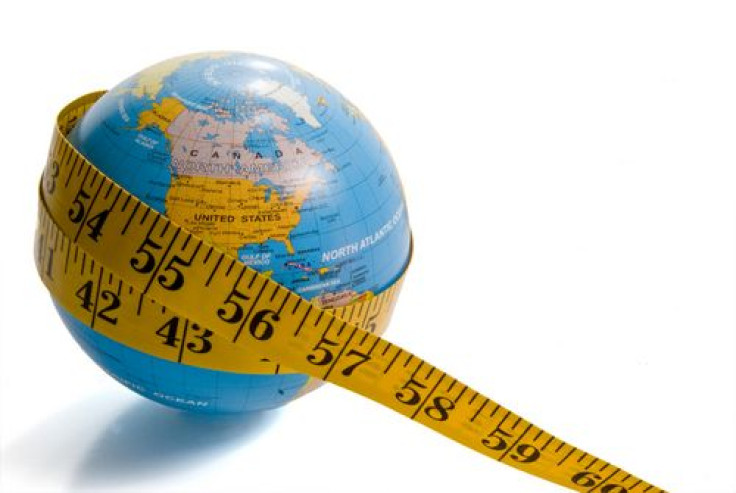Obesity Around The World: New Zealand's Threatening Rise And How America Compares To The Rest

Obesity has plagued millions of Americans and millions more throughout the world, causing an epidemic of overwhelming proportions, yet the only solution for this largely preventable condition has presented itself in the form of diet, sleep, exercise, and regulated medications. Americans are known for their fast food and growing waistline, but how do we compare to the rest of the world?
More than one-third of the U.S. adult population is obese, according to the Centers for Disease Control and Prevention (CDC). These 78.6 million are at heightened risk for obesity-related conditions, including heart disease, stroke, type 2 diabetes, and certain types of cancer. Treatments for these leading causes of preventable death cost America $147 billion, and the medical costs add up to $1,429 more for an obese patient than someone at a normal, healthy weight.
While some countries have been able to slow the rising rate of weight gain, not a single country on the planet has been able to report a downward trend in the rates of overweight and obesity in the last three decades. The prevalence of those who become overweight and obese is steadily and warily rising in children, adolescents, and consequently adults as well.
In the United States alone, the obesity rates in children doubled, and quadrupled in adolescents during the last 30 years. Campaigns have been launched to focus on children because their health is the future health of Americans, but there has been a pushback from Congress, which recently cut spending for the Women, Infants, and Children (WIC) federal food supplement program in 2013. If spending is cut for food-supplement programs that provide nutrition and health education, health food, and breastfeeding support, it makes it increasingly difficult to achieve their goal of getting healthful food on a budget. Protein, fruits, and vegetables are consequently replaced with processed foods, high sugar, salt, fatty foods, and temporarily filling carbohydrates.
The fuel feeding the obesity epidemic’s fire fundamentally consists of these foods, which you can find in any fast food restaurant, down any chip and cookie aisle, and lurk inside inconspicuous restaurant menu items. The increasingly frightening part about it all is the strong connection between income and health. Higher income women are less likely to be obese than low-income women and as educational level decreases, the obesity rate increases in women, according to the CDC’s National Center for Health Statistics (NCHS). Women are an integral part of the obesity epidemic because they are, for the most part, the caregiver who provides meals for the children.
New Zealand has already found "huge gaps" in their government’s healthy food policies and have released national action plants to address the 74 percent of failed areas of their food policy in August 2014. The Food Environment Performance Index was comprised of a panel of 52 public health experts who rated the effectiveness of their current health policies, infrastructure support, and food environment policies. The health costs in New Zealand have added up to $686 million, which has been directly attributable to overweight and obese citizens, two-thirds of adults and one-third of children.
By 2015, their government is expected to present a full funded, comprehensive plan designed to reduce disease, marketing of unhealthy food products, and the amount of saturated fats in their food, to the World Health Organization (WHO). Their plan consists of a 20 percent tax on sugar-sweetened beverages, a health star rating program, regulation of all broadcast media and packaging that advertises unhealthy food to children, and increase their $29 million annual budget to $70 million to cover the program’s funding.
What is the rest of the world doing, though? Worldwide, obesity has almost doubled since 1980, and according to WHO, obesity is preventable. Granted it’s a complex epidemic with interweaving, moving parts, and was just recognized by the American Medical Association as an official disease with the hopes of tackling it as one. However, it is the advent of instant gratification, fast food, lack of education, and enormous workloads of modern day global demand that have forced this life-threatening and expensive illness upon humans.
A recent study published in The Lancet this year evaluated the prevalence of overweight and obesity in children and adults on a national and global level looked at the accumulated burden and its upward trend from 1980 to 2013. Researchers funded by the Gates Foundation viewed 1,769 studies that included heart, weight, and physical measurement data throughout the world in order to create a ranking system throughout the world.
“Our findings show that increases in the prevalence of obesity have been substantial, widespread, and have arisen over a short time,” the study’s lead researcher Emmanuela Gakidou from the Institute for Health Metrics and Evaluation at the University of Washington, said in a press release. However, there is some evidence of a plateau in adult obesity rates that provides some hope that the epidemic might have peaked in some developed countries and that populations in other countries might not reach the very high rates of more than 40 percent reported in some developing countries."
Top 10 Most Obese Countries:
1. United States
2. China
3. India
4. Russia
5. Brazil
6. Mexico
7. Egypt
8. Germany
9. Pakistan
10. Indonesia
Source: Gakidou E, Ng M, Fleming T, Robinson M, Thomson B, and Graetz N, et al. Global, regional, and national prevalence of overweight and obesity in children and adults during 1980–2013: a systematic analysis for the Global Burden of Disease Study 2013. The Lancet. 2014.



























